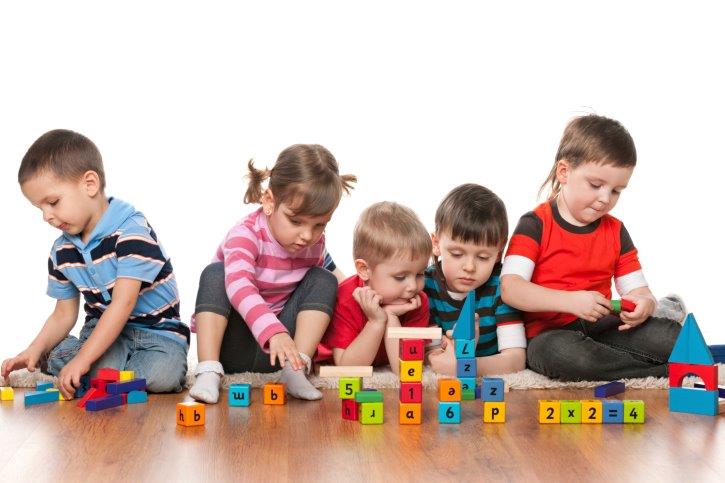Fine Motor Skills Development in Kids | The Essential Bases

As a parent or educator, you must have often heard the word “Fine Motor Skills”. Today, let us understand the Essentials of Fine Motor Skills Development.
Physical development of a child has 2 types of important skills – Fine Motor Skills & Gross Motor Skills. In this article, we are focusing on fine motor skills.
Gross Motor skills utilize larger group muscles and require less precession. Fine Motor Skills are all about smaller muscles of the body. It typically involves the coordination of small muscles in the hands, fingers and thumb. Fine motor skills require more precession hence fine motor skills will develop after gross motor skills.
With the development of these skills, a child is able to complete self-tasks such as feeding oneself, buttoning, writing, opening lunch boxes, using scissors etc.
Fine motor skill efficiency significantly influences the quality of the task outcome as well as the speed of task performance. Efficient fine motor skills require a number of independent skills to occur simultaneously to appropriately manipulate the object or perform the task.
Let us look at the Essentials of Fine Motor Skills Development. The development of fine motor skills is not complete even if one base is missing.
Essentials of Fine Motor Skills Development
1. Bilateral Integration & Coordination
This means using two hands simultaneously wherein one hand is leading and other is supporting. This may seem like a strange base but if your hands cannot work together, you may find it difficult to perform many fine motor tasks. Examples – tying of shoelace, opening the lid of the jar, holding paper while cutting, eating with fork and knife. All these activities need both hands to work simultaneously.
2. Posture control & stability
When the bigger muscles of the shoulder girdle and trunk are strong and stable, the smaller muscles of the arms and hands can move freely in a controlled way. Therapists refer to this as “postural control and stability”. When a child lacks stability in the shoulder girdle and trunk, he or she may hold the pencil very tightly to try and get more control over it or may press really hard on the paper. You may also see tension at the shoulders during fine motor tasks. Trying to use a pencil or scissors without the adequate stability of the large shoulder girdle and trunk muscles is like trying to paint a portrait while standing on a wobbly stepladder. It takes huge amounts of effort, is extremely tiring and the results are usually lousy.
3. Body awareness & Tactile Perception
If you are not getting good tactile (touch) feedback from your fingers, it is hard to be accurate with them! It is like feeling the dishes when you are wearing rubber gloves to wash them. It becomes difficult to identify the cutlery unless you see it. When a child has a poor touch perception, the pencil and the scissors may feel as though they are being held with rubber gloves on! There is probably not anything wrong with the nerves in the hands, but the brain is not processing the information from the hands properly, and so fine motor development is not optimal. Kids with poor tactile perception can sometimes be really clumsy with their hands, always dropping small items and letting things slip out of their grasp. Sometimes they hold items with too much force, so they can “feel” it properly.
4. Hand Function
Hand function involves hand & finger strength, hand-eye coordination, hand dominance & hand division. The hand and finger strength is the ability to exert force against resistance using the hands and fingers that allows the necessary muscle power for controlled movement.
Hand-eye coordination is the ability to process information received from the eyes to control, guide and direct the hands in the performance of a task such as handwriting. Hand Dominance is the consistent use of one (usually the same) hand for task performance which allows refined skills to develop. Hand division is using just the thumb, index and middle finger for manipulation, leaving the fourth and little finger tucked into the palm not participating but providing stability for the other 3 fingers.
5. Crossing midline
The midline is an imaginary midline drawn from the head to the toe that divides the right and left halves of the body. Crossing this midline means that a body part (e.g. hand or foot) is able to spontaneously move over to the other side of the body to work there.
Before this ability is well established, a young child may tend to use the left hand on the left side of the body and the right hand on the right side of the body. On a physical level, when your child spontaneously crosses the midline with the dominant hand, then the dominant hand is going to get the practice that it needs to develop good fine motor skills. If your child avoids crossing the midline, then both hands will tend to get equal practice at developing skills, and your child’s true handedness may be apparently delayed and fine motor skills may not be as good as they could be
These are the Essentials of Fine Motor Skills Development. Once you understand the essential bases of fine motor skills development, you can understand my next article on the developmental checklist of fine motor skills in infancy, toddlerhood, preschool and in school-age.
Related article: Do You Know Your Child’s Personality And Behaviour?








